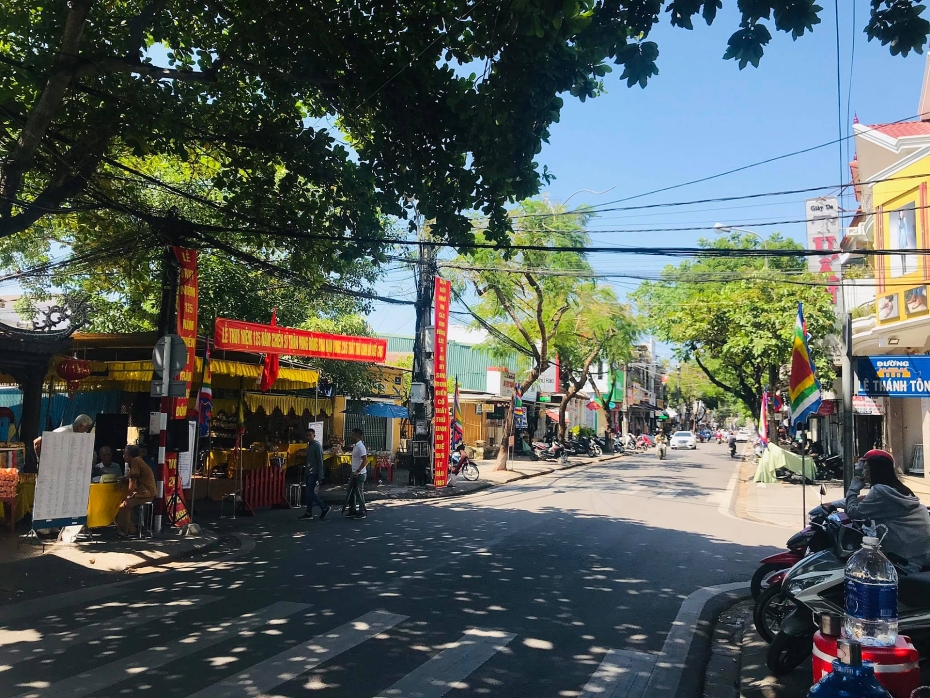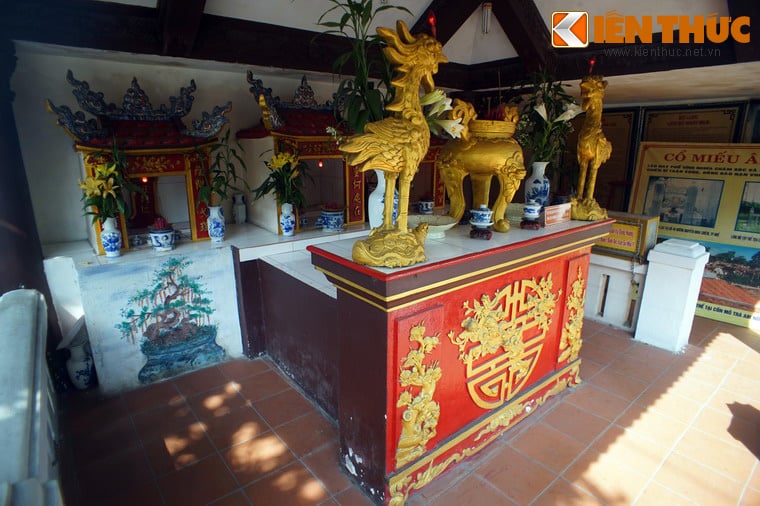Âm Hồn Temple stands as a historical and spiritual monument deeply connected to a tragic event, built to commemorate numerous soldiers and Huế compatriots who perished in the harrowing 'Fall of the Imperial Capital' in 1885.
Âm Hồn Temple – A Vital Spiritual Landmark in Huế
An Unforgettable Historical Event
Âm Hồn Temple today is situated on Mai Thúc Loan Street in Thuận Lộc Ward. Every year on the 23rd of the 5th lunar month, elderly locals gather here for ceremonies, honoring the sacrificed souls. For a long time, this day has become a communal memorial day for the entire people of the Ancient Capital Huế.
On the night, early morning of the 23rd of the 5th month in the year of the Fire Rooster (Ất Dậu), Tôn Thất Thuyết led an armed attack directly on the French stronghold at Mang Cá and the Tòa Khâm Sứ area on the opposite bank of the Perfume River.

Two military forces led by Tôn Thất Lệ and Trần Xuân Soạn simultaneously opened fire from the Imperial City of Huế. Initially, the enemy forces were in disarray due to the surprise attack, but later they regained their position and counterattacked, seizing control of the Imperial Citadel of Huế.
The enemy attacked our forces at Hàng Bè Street (now Đào Duy Anh, Huỳnh Thúc Kháng) and was blocked at Thanh Long drainage. The enemy shifted to Lê Văn Hưu Street and advanced along Âm Hồn Street (now Lê Thánh Tôn) for a direct assault towards the Imperial City.

On the morning of July 5, 1885, French troops stormed into the Imperial Capital, causing devastating fires, mass killings, and horrifying looting. A frantic and tragic exodus occurred. The most severely affected were the people inside the inner citadel, where almost every family lost someone to the extent that historical records could not capture all the victims of this event.

Many people were hit by bullets, trampled to death in the chaos. Some fell while trying to climb out of the citadel, or slipped and drowned in the Tịnh Tâm and Phú Văn ponds. The number of hastily wrapped funeral shrouds for the tragically deceased cannot be counted.
Establishment of Âm Hồn Temple
It wasn't until nearly 10 years later, during the French colonial street planning in Huế, that hundreds of skeletons were discovered, concentrated most in the drainage ditch area near Phu Văn Lake. This location was where people from various directions gathered to find ways to escape through the city gates.

The discovery of numerous skeletons was reported to the authorities. Over 40 iron coffins were brought in to collect the remains, temporarily placed at a corner plot for Buddhist funeral rites. Subsequently, these coffin containers were taken for burial at cemeteries along the foothills of Ngự Bình mountain.

In remembrance, the community initially erected three makeshift altars using brick shards, with an original stone slab on top. Later, the people contributed funds to build a memorial area: a larger central temple for honoring military officials, a temple on the right for female spirits, and a temple on the left for male spirits, known as Âm Hồn Temple.
Since then, the road in front of the temple has been referred to as Âm Hồn Street. After 1975, the name was changed to Lê Thánh Tôn, but the generations of Huế residents still commonly call it Âm Hồn Street.

After more than 118 years, this remains a spiritually and culturally significant site in the consciousness of the people of Huế. Âm Hồn Temple underwent renovation from late 2012 to January 2013, funded by contributions from the community and the government. The restoration process replaced wooden support columns, added new roof tiles, and updated decorative elements.

Every year on the 23rd of the 5th lunar month, the ritual of honoring Âm Hồn is meticulously organized following traditional customs in Huế, featuring lamentation literature. The soul-offering ceremony is deeply humane, expressing solidarity among the community, representing a typical folk festival in this cultural heritage region.

According to researchers, alongside Âm Hồn Temple, the Âm Hồn Stele was also established by the Nguyễn dynasty to commemorate that tragic event. However, to date, only the temple is known to the public for offerings and worship, while the stele is currently under investigation to locate its position.
The people of Huế can never forget the historic day of May 23rd. Perhaps nowhere else in the S-shaped land is there a grand and nationwide ceremonial offering like the ritual at Âm Hồn Temple on the 23rd of the 5th lunar month every year in Huế.

For 137 years, history has seen its ups and downs, yet the people persistently maintain the ceremony with unwavering dedication and a profound love for their homeland. Visiting Huế during these ritual days, tourists will sense the noble sacrifice and enduring cultural essence of the local community.
According to Minprice
***
Reference: Minprice Travel Handbook
MinpriceNovember 2, 2022